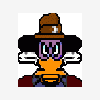You don't need to run CCleaner
and Windows Disk Cleaner. Just one cleaner will do. And for the most efficient cleaning and defragging, boot into Safe Mode and run your preferred cleaner. Then reboot into Safe Mode again to run your defragger. The reason you need to reboot between the two processes is because some files cannot be deleted, even in Safe Mode, because Windows has them opened. So the cleanup programs tag those files to be deleted during the next boot, but before Windows actually starts. Rebooting will allow those tagged files to be fully deleted, thus allowing for a more efficient defrag.
Although I have 465Gb of free space of 500 on the hdd disk, when will a run with Win7 Disk cleanup be beneficial
Note you have a HUGE amount of free space. This means the drive's interface has lots of free space to store your files without splitting them up into fragments. So you would rarely, if ever, need to defrag your disk.
Running Disk Cleanup is not just to free up space. In fact, it is used to clean out clutter - like 1000s of temporary Internet files and cookies you just don't need on your disk and those typically, even in total, typically consume considerably less than 1Gb. I do it more as a security step than to free up disk space. I use CCleaner once a week or so. And I use CCleaner instead of the other programs because it allows me to set which cookies I want to keep. So, for example, I have it set so it will not delete the Geekstogo cookies. In this way, my computer will remember my login credentials and I won't have to re-enter my username and password after every cleanup. I have CCleaner preserve the cookies for all the sites I visit regularly.
and where do I find and install Win7 disk cleaner
It is already in Windows and I provided a link above showing how to access and use it.















 Sign In
Sign In Create Account
Create Account

